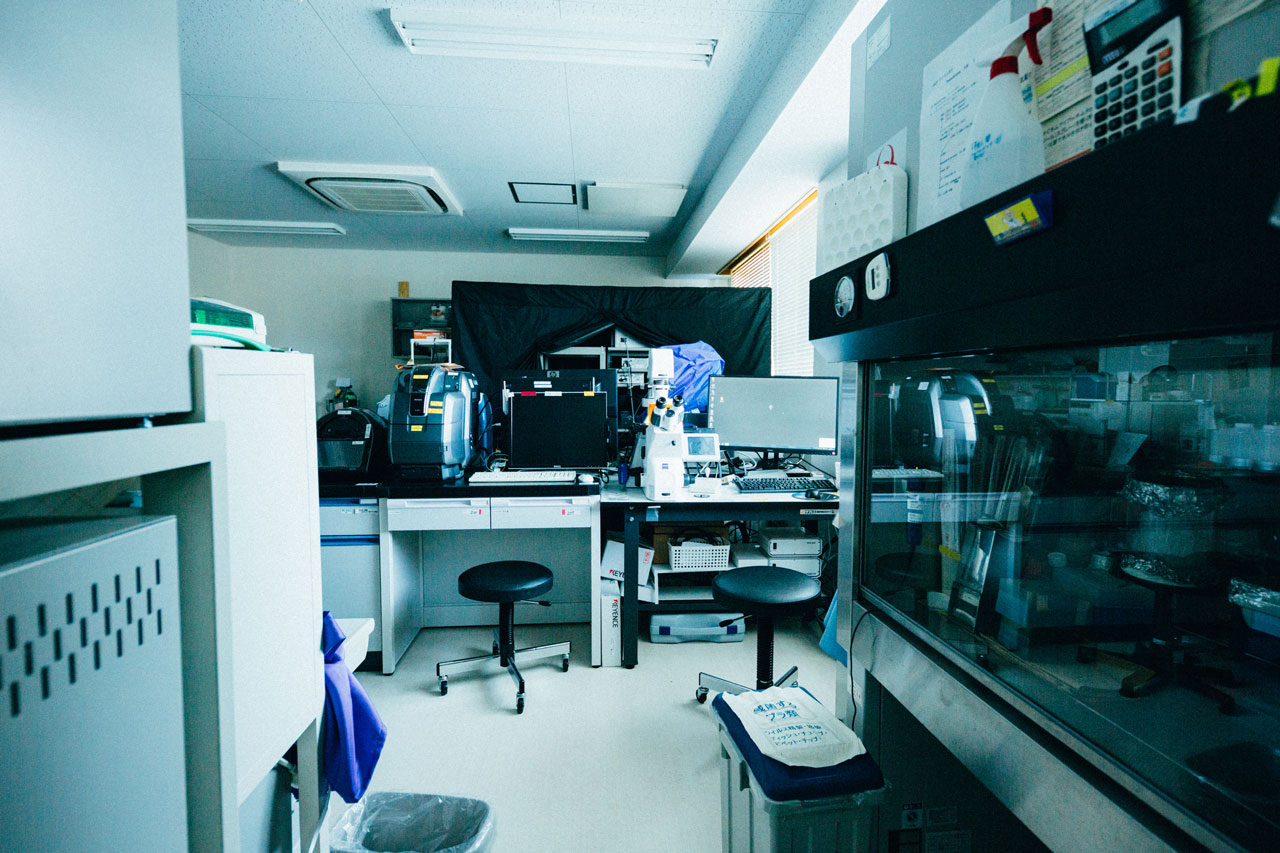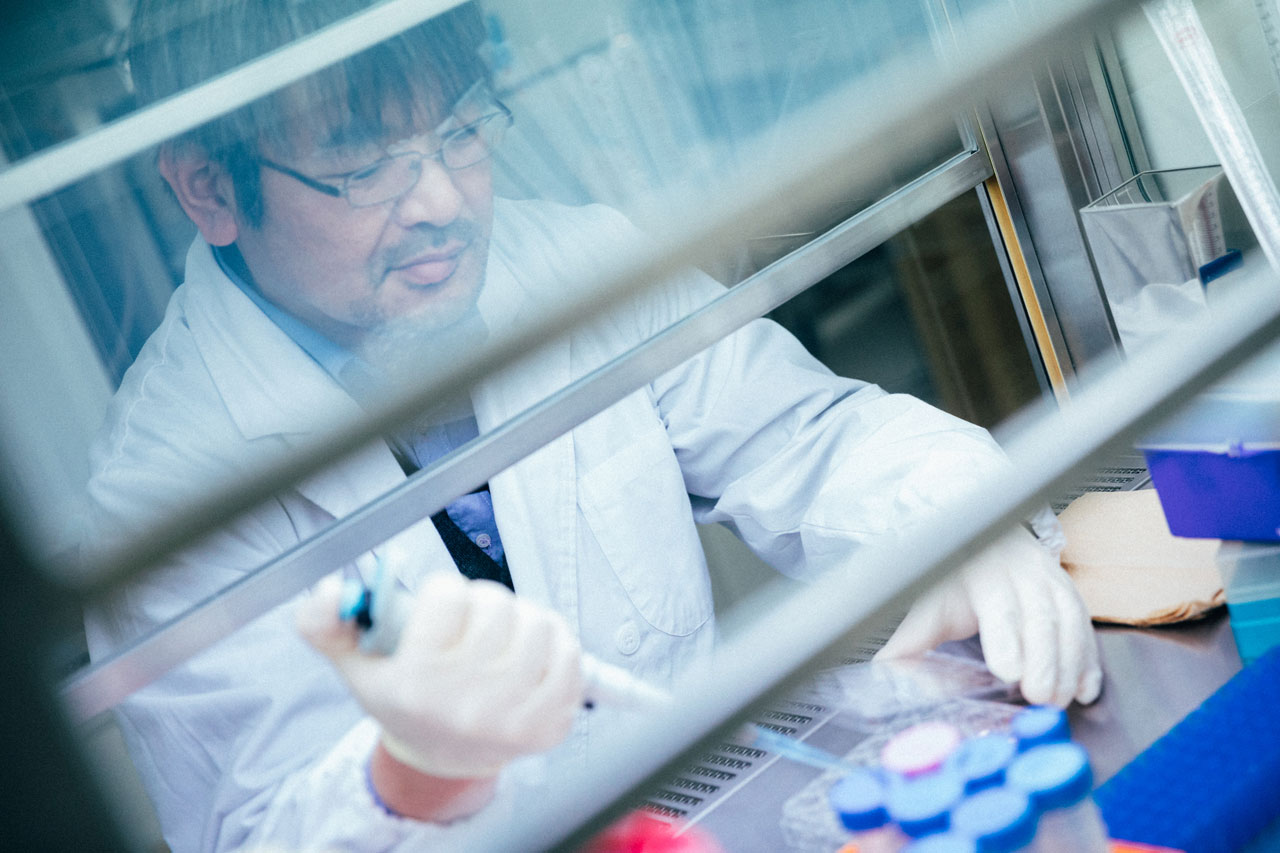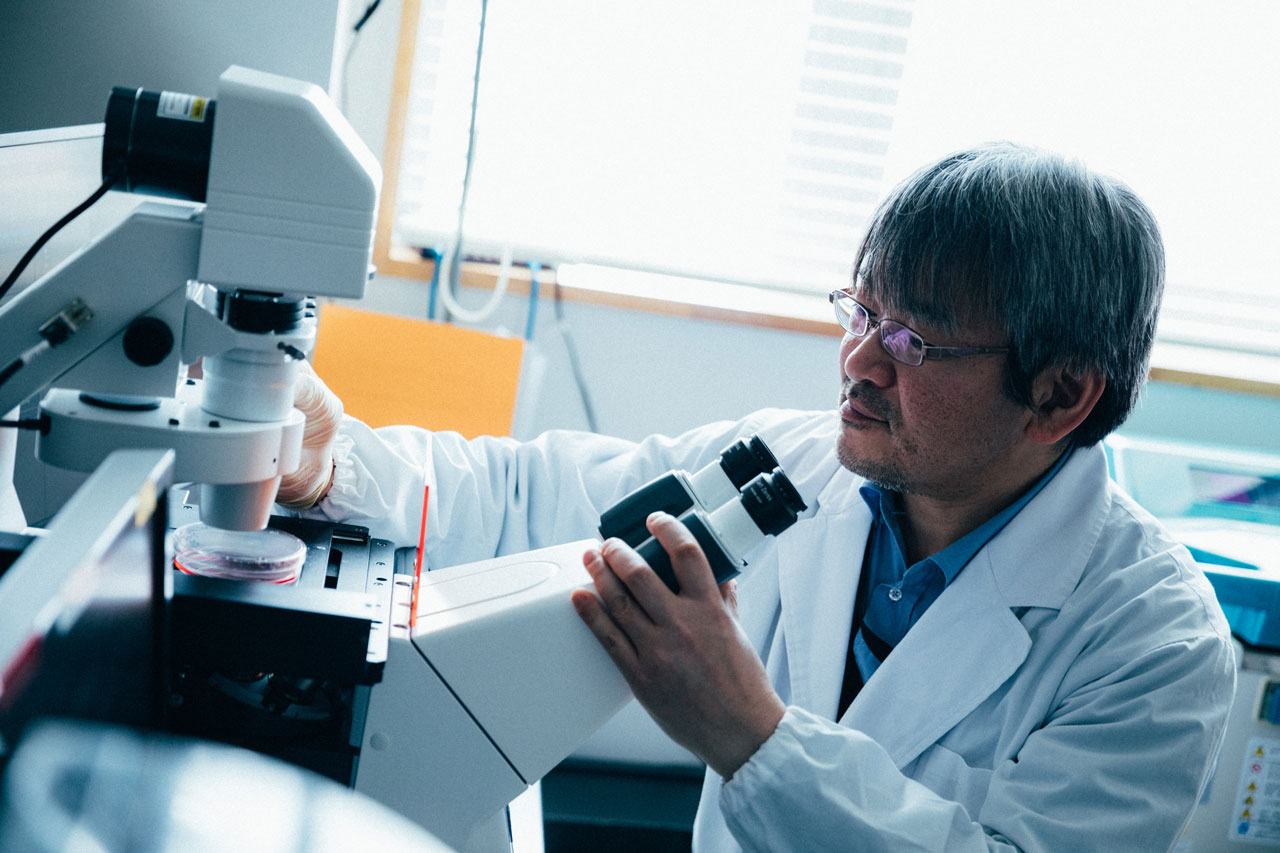What we need now is to accelerate visual regeneration for the future.
Professor Hiroshi Tomita, Doctor of Philosophy in Medicineachievements→
Dr. Tomita is a professor at Biological Sciences, Faculty of Science and Engineering, Iwate University, visiting professor at Clinical Research, Innovation and Education Center, Tohoku University Hospital and visiting researcher at the Laboratory for Adaptive Intelligence, RIKEN, Japan. He is a leading figure in the application of visual regeneration in humans using the light-sensitive genes of green algae. Dr. Tomita specializes in optical neuroscience, molecular biology and neuroscience and is a fellow at JIG-SAW in regenerative medicine.
I always struggled with my dilemma
Originally, I studied therapeutic approaches for halting the progression of age-related macular degeneration, one of the common causes of blindness. In other words, I studied how to prevent eyesight from deteriorating. I continued this in the United States at the University of Oklahoma. I always struggled with the dilemma: even if the progression of degeneration could be halted, this wouldn’t regain the eyesight that was already lost. I also felt limitations to the treatment, with only a single method for many different diseases that could induce blindness. So I changed my mindset. I stopped trying to halt the progression of blindness. Even if a patient went blind, we could do something to enable the patient to sense light and see things again. This led me to start studying artificial retinas, which were beginning to draw attention internationally.

These efforts brought us to a visual regeneration method that utilized genetic recombination and the software-based control of signals.
An retinal prosthesis involves implanting an electrode into the eye and using a camera to capture images so that the electrode can stimulate the nerve cells in the eye and transmit image information. Imagine the movie The Terminator, and you might be able to understand it more easily. This area represented a groundbreaking challenge where nerve cells and technologies were intrinsically linked. However, it is impossible for us to make a chip to use in the study of artificial retinas. We received LSI chips and transplanted them into animals. Without LSI chips, our study could hardly proceed. So I explored other methods of visual regeneration that could be performed by us. These efforts brought us to the software-based direct control of signals utilizing what we could do best, genetic recombination for visual regeneration.

In the future technological evolution will accelerate visual regeneration
Currently we are focused on the NEW.VISION project for controlling photoreceptor cells through the use of software. Gene therapy strengthens the retina’s ability to receive light, and the perception of light is technologically controlled. I always try to explore what kind of treatment I would seek if I went blind.
If I were to regain my eyesight, seeing the faces of my loved ones and their facial expressions would make me feel happier than anything.
I try to use a procedure that is as simple as possible. It should help to restore the eyesight to the same level as it was before the eyes went blind or even better. This is not easy, but it can be possible with technological advances. Our efforts aim at enabling blind persons to clearly restore their eyesight by simply wearing eye gear, namely the NEW.VISION glasses developed in this project. This could be made possible through the optimal control of the signal data created by the software that is built into the NEW.VISION glasses. The project is already in the verification stage. I believe it will greatly accelerate visual regeneration in the near future.

Development of regenerative medicine is directly linked to the development of civilization
We are almost reaching an age when healthcare and technologies will be closely linked. Even now, a tool has been developed with an ultra-small implant device to read brain waves on a real-time basis and assist humans in moving their bodies. In the area of vision, it is already feasible to capture images using a camera and project them onto glasses in real time. In recent years, regenerative medicine has also undergone remarkable development thanks to the utilization of advanced technologies from many different areas. These advanced technologies are expected to expand throughout the areas of regenerative medicine and more. It is not an exaggeration to say that the development of regenerative medicine is directly linked to the development of civilization.
